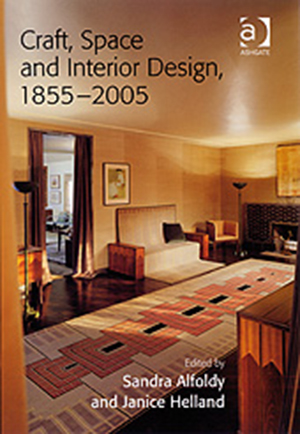 “The Interior of Modernism: Catherine Bauer and the American Housing Movement.” Craft, Space and Interior Design 1855-2005, eds. Janice Helland and Sandra Alfoldy. Aldershot, England; Burlington, VT: Ashgate, 2008. 169-188.
“The Interior of Modernism: Catherine Bauer and the American Housing Movement.” Craft, Space and Interior Design 1855-2005, eds. Janice Helland and Sandra Alfoldy. Aldershot, England; Burlington, VT: Ashgate, 2008. 169-188.
American urban planner and housing activist, Catherine Bauer (1905-1964) was a prolific writer, influential teacher and respected public intellectual in the areas of housing and city planning. Based on a close reading of her published works and unpublished papers, I argue that Bauer's political and intellectual work proposed a fundamental reconstitution of architecture as a philosophical discipline, as an art, and as a design profession. Bauer charged architects, urban planners and politicians with the task of redefining architecture in democratic terms. Only through a radical, collaborative interdisciplinarity could architecture rise to meet what Bauer understood to be the challenge of the twentieth century: to house the vast numbers of poor, homeless and displaced. Bauer affirmed that these individuals, traditionally outside architectural discourse and practice, should be at the very heart of its concerns. Such users' fundamental needs were to be the true "interior" of modernism.
Early in her career, Bauer understood modern architecture's disavowal of ornament as a democratizing design advance, which would allow widespread access to such well-known modernist essentials as light, air, privacy, and sanitary living conditions. As expressed in the 1937 Housing Act, the concept of "minimum standards" was famously attached to Bauer's promotion of housing as a human right. Later, however, Bauer critically reassessed the paternalism underpinning such standards. She came to defend the diversity of "emotional and cultural values" among the residents of American public housing projects, and the situated knowledge of such individuals. This knowledge and these differences should become, she believed, the standard by which architects should operate. Anticipating the critique of the author in philosophical discourse, and the critique of phallocentric genius in feminist art and architectural history, Bauer's voice is today oddly silent, particularly in narratives of the movement of modernism from Europe to America, 1930-1957. Without a critical account of Catherine Bauer's proposals for, and critiques of modern housing, this same period is emptied of its specificity: as a crucial utopian moment within the history of modern architecture.